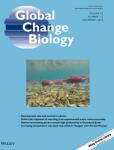Long-term changes in abundances of Sonoran Desert lizards reveal complex responses to climatic variation
Understanding how climatic variation affects animal populations and communities is essential for addressing threats posed by climate change, especially in systems where impacts are projected to be high. We evaluated abundance dynamics of five common species of diurnal lizards over 25 years in a Sonoran Desert transition zone where precipitation decreased and temperature increased across time, and assessed hypotheses for the influence of climatic flux on spatiotemporal variation in abundances. We repeatedly surveyed lizards in spring and summer of each year at up to 32 sites, and used hierarchical mixture models to estimate detection probabilities, abundances, and population growth rates. Among terrestrial species, abundances of a short‐lived, winter–spring breeder increased markedly by an estimated 237%–285% across time, while two larger spring–summer breeders with higher thermal preferences declined by up to 64%. Abundances of two arboreal species that occupy shaded and thus sheltered microhabitats fluctuated but did not decline systematically. Abundances of all species increased with precipitation at short lag times (1–1.5 years) likely due to enhanced food availability, but often declined after periods of high precipitation at longer lag times (2–4 years) likely due to predation and other biotic pressures. Although rising maximum daily temperatures (Tmax) are expected to drive global declines of lizards, associations with Tmax were variable and weak for most species. Instead, abundances of all species declined with rising daily minimum temperatures, suggesting degradation of cool refugia imposed widespread metabolic or other costs. Our results suggest climate warming and drying are having major impacts on lizard communities by driving declines in species with traits that augment exposure to abiotic extremes and by modifying species interactions. The complexity of patterns we report indicates that evaluating and responding to the influence of climate change on biodiversity must consider a broad array of ecological processes.

